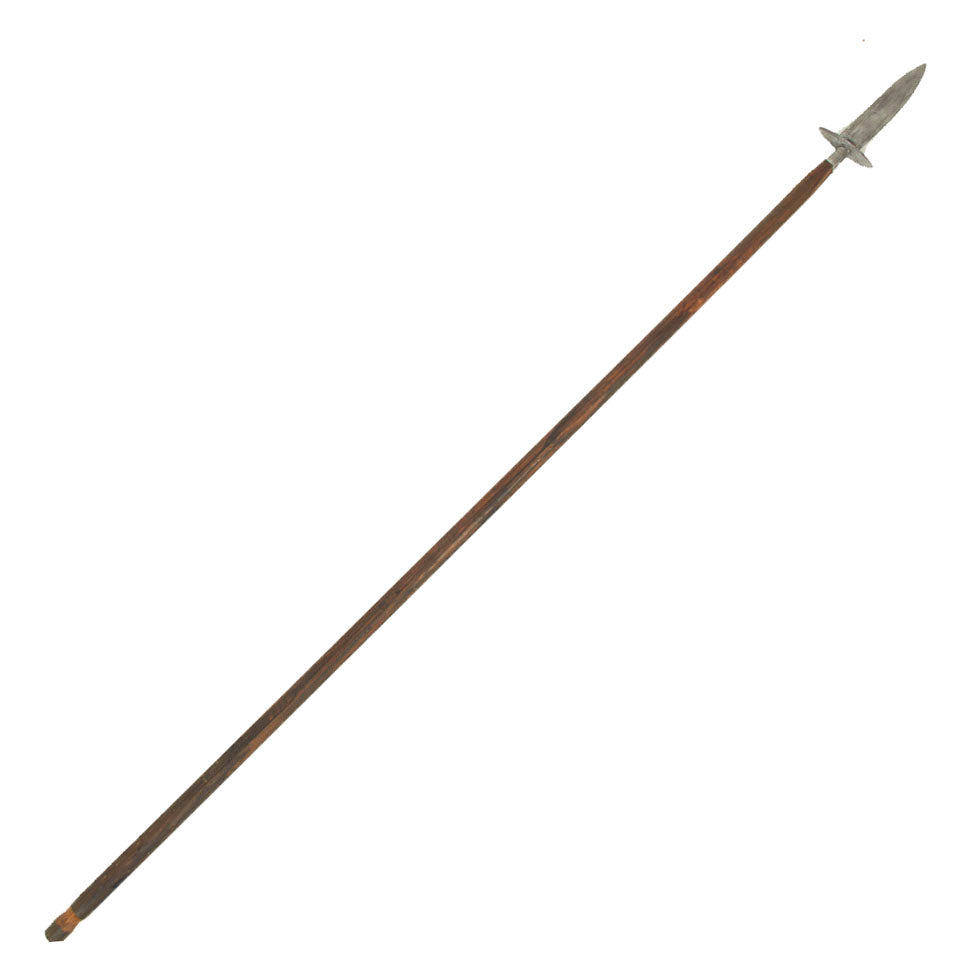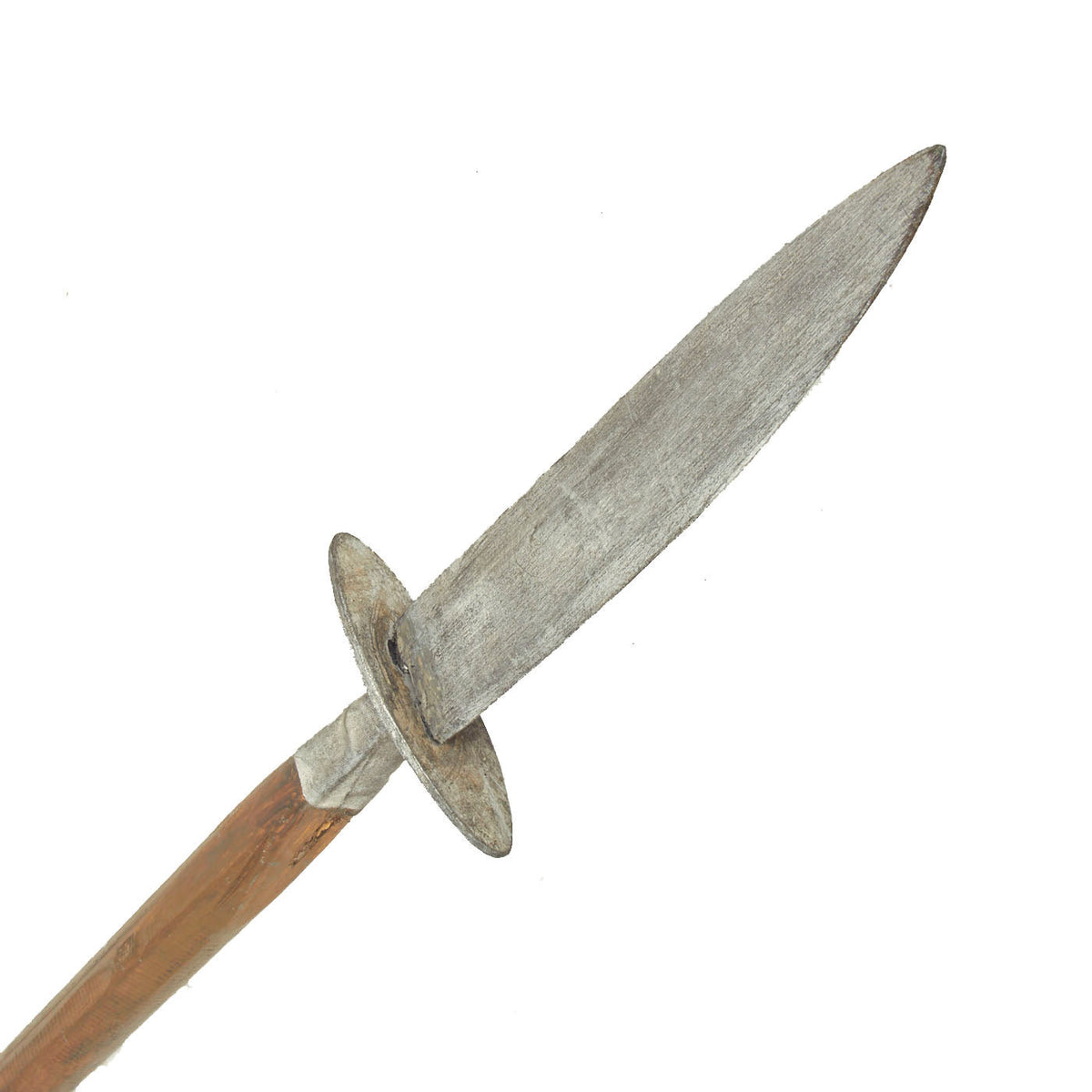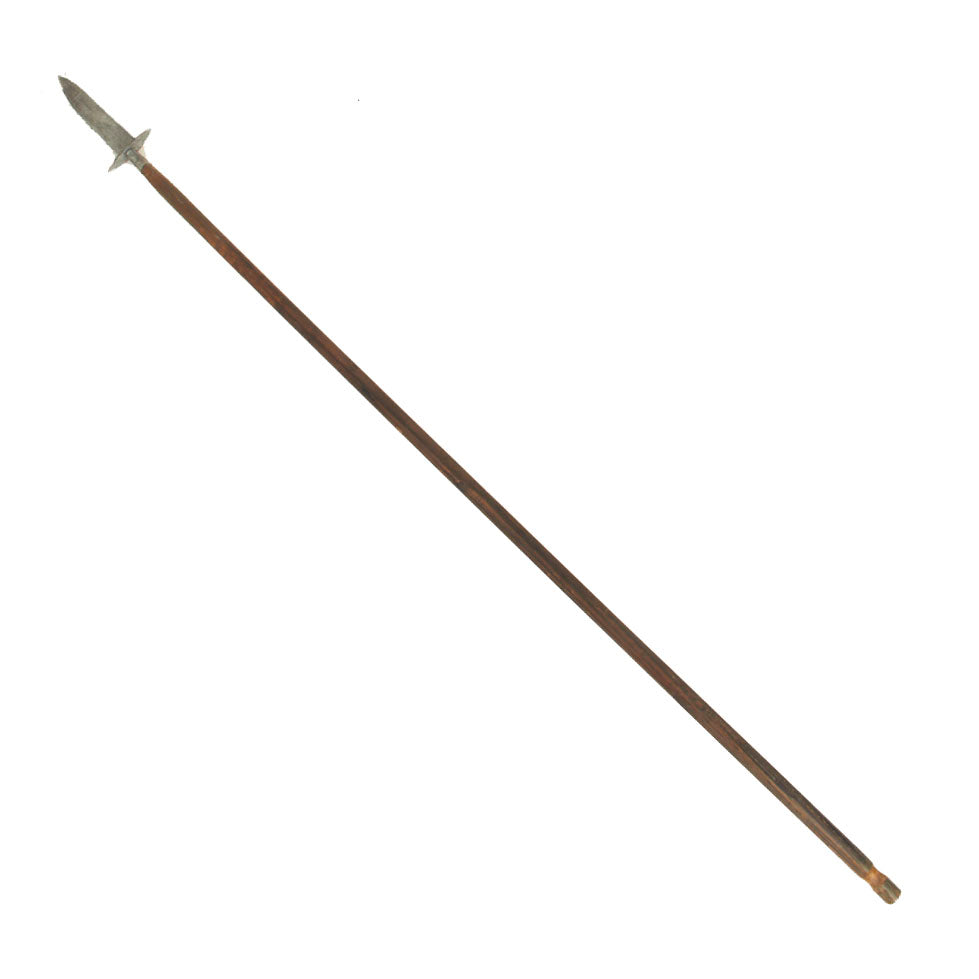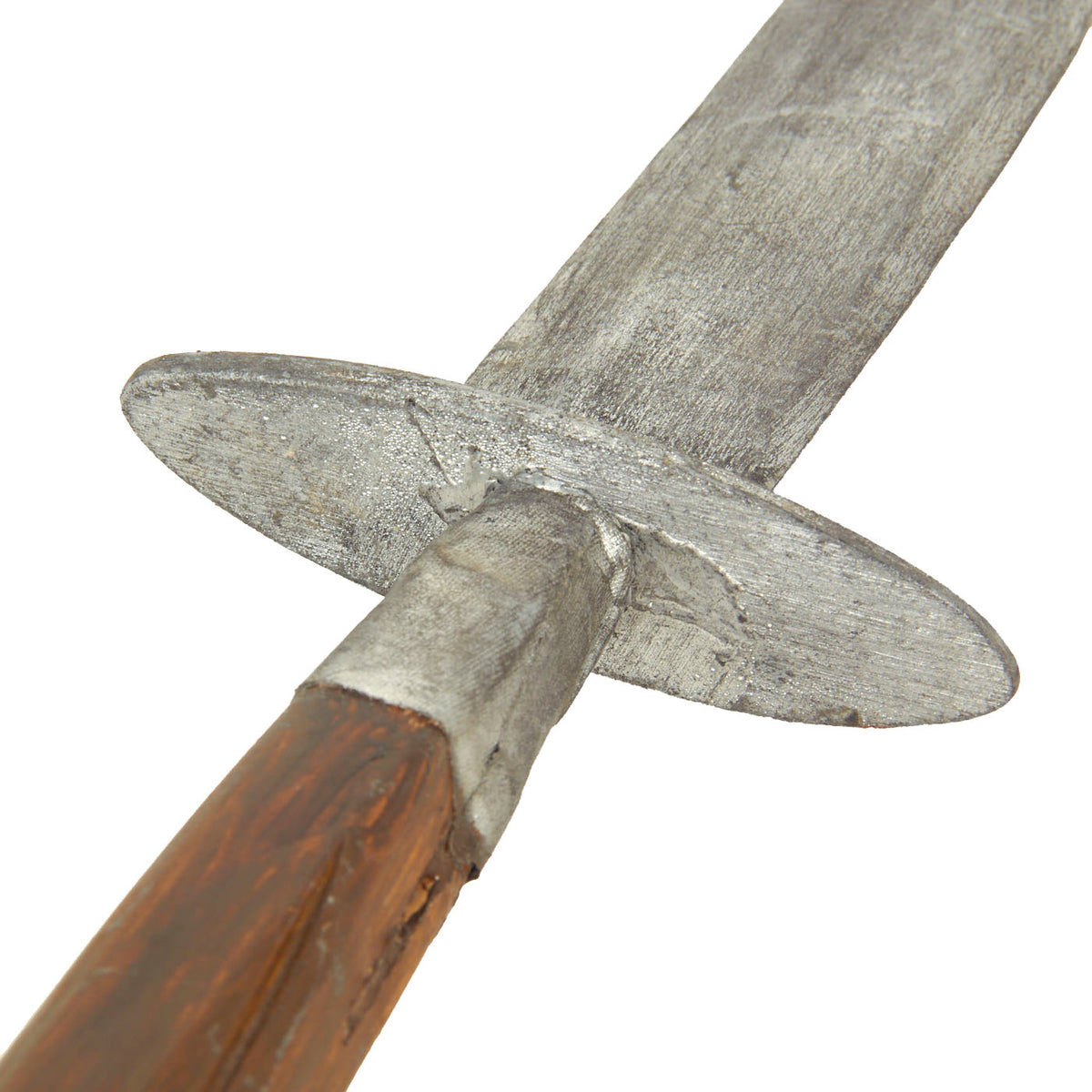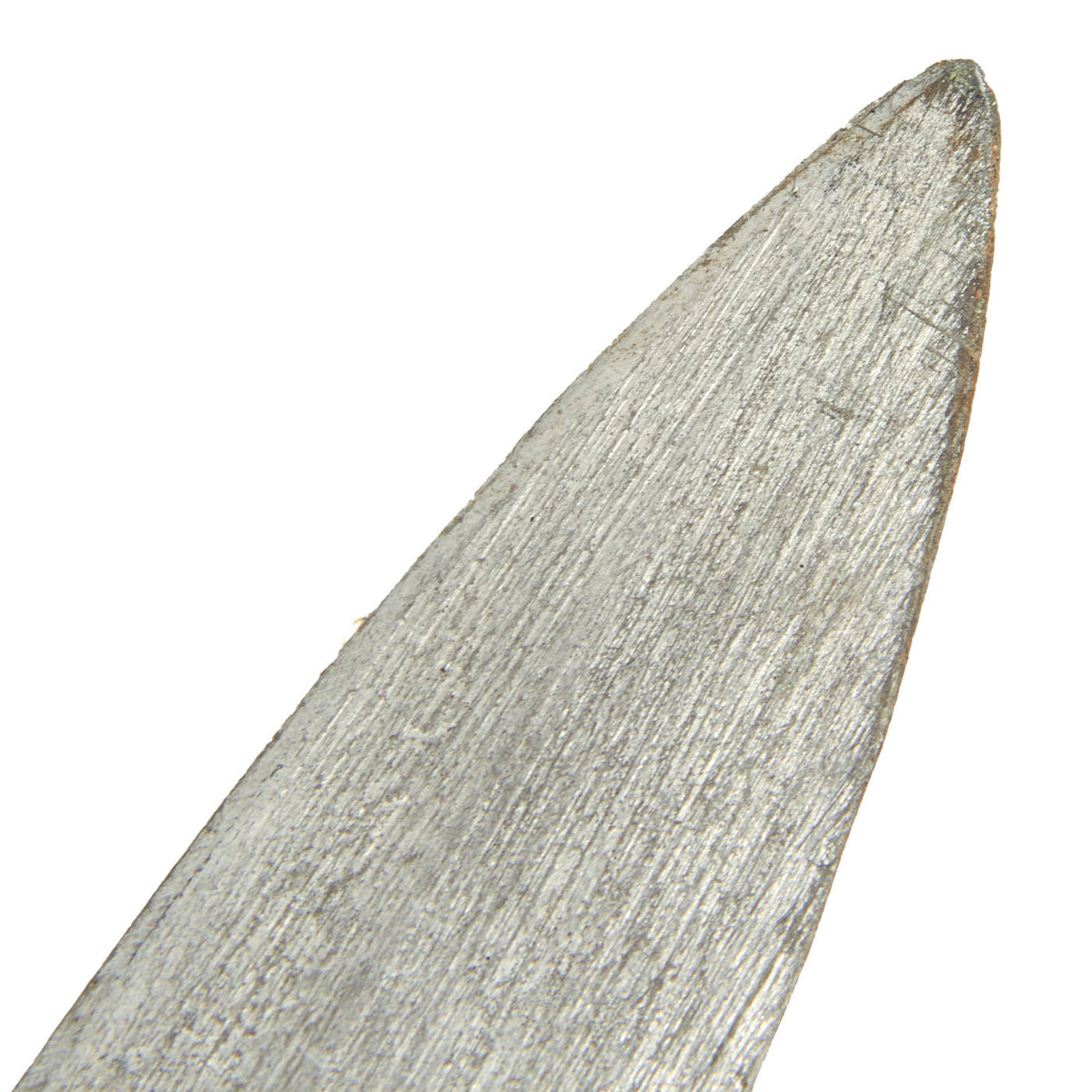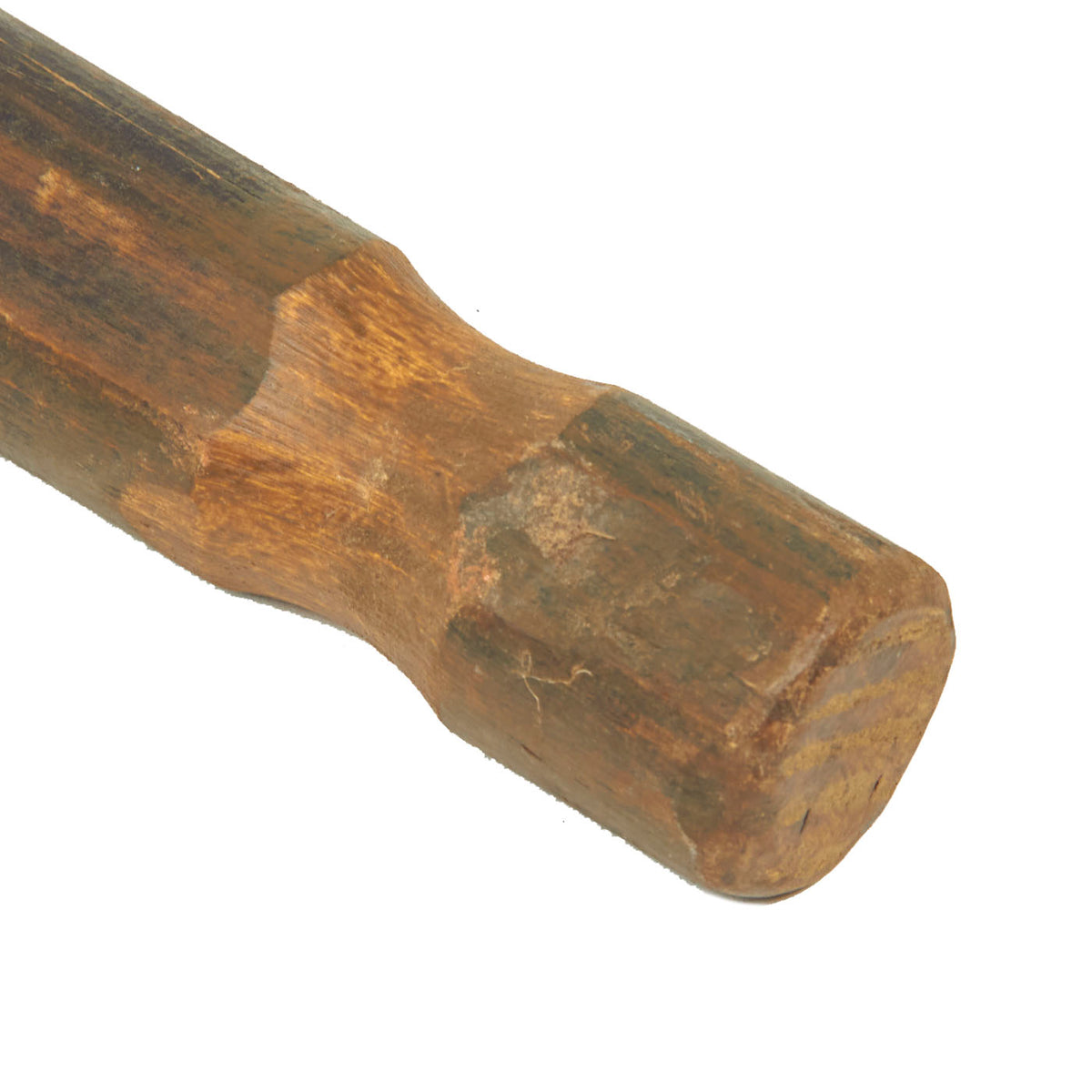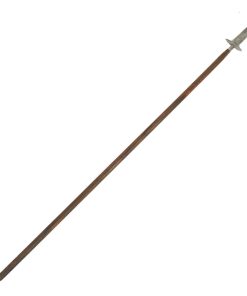Original Film Prop “John Brown Pike” From The Mini Series “The Good Lord Bird” – Starring Ethan Hawke Original Items
$ 195,00 $ 78,00
Original Item: Only Ones Available. Now this is a fantastic opportunity for the movie and TV show prop enthusiasts to add to their collection. We are offering a very limited number of Film prop “John Brown” Pikes which were purchased directly from the armorer who worked on and serviced all firearms used on the set of the Showtime Mini Series “The Good Lord Bird” during production in 2019.
The Good Lord Bird is a 2020 American historical drama miniseries, based on the 2013 novel of the same name by James McBride. Focusing on John Brown’s attack on American slavery, the series was created and executive produced by Ethan Hawke and Mark Richard. Produced by Jason Blum, through Blumhouse Television, it premiered on October 4, 2020, on Showtime.
The series is told from the point of view of Henry Shackleford (Joshua Caleb Johnson), a fictional enslaved boy, who is part of John Brown’s (Ethan Hawke) motley crew of abolitionist soldiers during the time of Bleeding Kansas, eventually participating in the famous 1859 raid on the Federal Armory at Harpers Ferry, Virginia (since 1863, West Virginia). Brown’s raid failed to initiate a slave revolt as he intended, but it was one of the events that started the American Civil War.
It is not just the story of Brown but that of those that accompanied him. According to Hawke, “If you really study this character, he asks a lot of you philosophically. He challenges why so many of us accept the unacceptable”. Author James McBride was involved in the production and according to him, “John Brown is a real hero to me and to many Black people who are no longer alive. John Brown gave his life and two of his sons’ lives to the cause of freedom for Black people, and he started the Civil War. They buried this man’s story for a long time….”.
Pikes like this can be seen in several of the scenes in the series, and are prominently used as set decoration during the raid scenes in the series. In the picture section, we included a screenshot of Ethan Hawke with a number of pikes leaning against the wall in the background!
The Pikes are in lovely condition, showing some signs of wear and tear from use in the production. These pieces were made by the property department working on the show from wood and plastic. Each Pike is slightly different than the next, as these were all made by hand, and copied from original extant examples of the real John Brown Pikes made in 1859.
The pikes overall are approximately 82” in height.
Comes more than ready for display or use!
The Original John Brown Pikes
As a child born in the northern United States, John Brown was taught that slavery was a sin. As an adult he took these values to Kansas where he was drawn into skirmishes along the Kansas-Missouri border prior to the Civil War. Brown often resorted to violence in an effort to ensure that Kansas Territory became a free state. Ultimately, he hoped all slaves would rise up against their masters.
During a trip East in 1857 to raise funds for his cause, Brown contracted with blacksmith Charles Blair of Collinsville, Connecticut for several hundred pikes (pikes are weapons with long wooden shafts ending in pointed steel heads, typically used by foot soldiers). Blair was a forge master working for Collins and Company who made quality edged tools. He agreed to make 1,000 pikes for Brown at $1 a piece, payable in installments.
After making 500 weapons, though, Blair halted production because Brown had failed to pay him. Blair held the pikes for two years. In 1859, Brown showed up at Blair’s door with the needed funds to purchase 954 pikes and requested that they be forwarded to Chambersburg, Pennsylvania (Brown had other firearms shipped there as well).
From Chambersburg, Brown’s friends forwarded the weapons to a farm in Maryland, just a few miles from the U.S. arsenal at Harpers Ferry, Virginia. The pikes and other firearms were purchased for an insurrection Brown planned to lead on the federal arsenal. Brown’s army of 20 slaves took a few hostages from the community and captured the arsenal in October of 1859. Armed with their pikes and guns, Brown’s men were overwhelmed when troops, under the command of Colonel Robert E. Lee, descended upon them. Captured and wounded, Brown was tried as a traitor and hanged on December 2, 1859.
The pikes Brown ordered consisted of a 9 ½ to 10-inch long double-edged blade of forged cast steel, a 4 ½ inch wide iron guard, a 3 ¼ inch long, tapering ferrule, and a screw. These were fitted onto six-foot ash handles. Serial numbers were stamped on three parts of the weapon. This pike is stamped 630.
John Brown’s Raid on Harpers Ferry
John Brown’s raid on Harpers Ferry was an effort by abolitionist John Brown, from October 16 to 18, 1859, to initiate a slave revolt in Southern states by taking over the United States arsenal at Harpers Ferry, Virginia (since 1863, West Virginia). It has been called the dress rehearsal for, or Tragic Prelude to the Civil War.
Brown’s party of 22 was defeated by a company of U.S. Marines, led by First Lieutenant Israel Greene. Ten of the raiders were killed during the raid, seven were tried and executed afterwards, and five escaped. Several of those present at the raid would later be involved in the Civil War: Colonel Robert E. Lee was in overall command of the operation to retake the arsenal. Stonewall Jackson and Jeb Stuart were among the troops guarding the arrested Brown, and John Wilkes Booth and Walt Whitman were spectators at Brown’s execution. John Brown had originally asked Harriet Tubman and Frederick Douglass, both of whom he had met in his transformative years as an abolitionist in Springfield, Massachusetts, to join him in his raid, but Tubman was prevented by illness and Douglass declined, as he believed Brown’s plan was suicidal.
The raid caused more excitement in the United States than had been seen in many years. It was extensively covered in the press nationwide—it was the first such national crisis to be publicized using the new electrical telegraph. Reporters were on the first train leaving for Harpers Ferry after news of the raid was received, at 4 p.m. on Monday, October 17. It carried Maryland militia, and parked on the Maryland side of the Harpers Ferry bridge, just 3 miles (4.8 km) east of the town (at the hamlet of Sandy Hook, Maryland). As there were few official messages to send or receive, the telegraph carried on the next train, connected to the cut telegraph wires, was “given up to reporters”, who “are in force strong as military”. By Tuesday morning the telegraph line had been repaired, and there were reporters from The New York Times “and other distant papers”.
The label “raid” was not used at the time. A month after the attack, a Baltimore newspaper listed 26 terms used, including “insurrection”, “rebellion”, “treason”, and “crusade”. “Raid” was not among them.
Brown’s raid was at first viewed as madness, the work of a fanatic. It was his words and letters after the raid and at his trial, Virginia v. John Brown, aided by the writings of supporters including Henry David Thoreau, that turned him into a hero and icon for the Union.
Fast Shipping with Professional Packaging
Thanks to our longstanding association with UPS FedEx DHL, and other major international carriers, we are able to provide a range of shipping options. Our warehouse staff is expertly trained and will wrap your products according to our exact and precise specifications. Prior to shipping, your goods will be thoroughly examined and securely secured. We ship to thousands clients each day across multiple countries. This shows how we're dedicated to be the largest retailer on the internet. Warehouses and distribution centres can be located throughout Europe as well as the USA.
Note: Orders with more than one item will be assigned a processing date depending on the item.
Before shipping before shipping, we'll conduct a thorough inspection of the items you have ordered. Today, the majority of orders will be delivered within 48 hours. The delivery time will be between 3-7 days.
Returns
The stock is dynamic and we cannot completely manage it because multiple stakeholders are involved, including our factory and warehouse. So the actual stock may alter at any time. It's possible that you may not receive your order once the order has been made.
Our policy is valid for a period of 30 days. If you don't receive the product within 30 days, we are not able to issue a refund or an exchange.
You can only return an item if it is unused and in the same state as the day you received it. You must have the item in its original packaging.
Related products
Uncategorized
Uncategorized
Uncategorized
Uncategorized
Uncategorized
Uncategorized
Uncategorized
Uncategorized
Uncategorized
Uncategorized
Uncategorized
Uncategorized
Armoured Fighting Vehicles of the World: AFVs of World War One (Hardcover Book) New Made Items
Uncategorized
Uncategorized
Armored Burgonet Helmet & Polearm from Scottish Castle Leith Hall Circa 1700 Original Items
Uncategorized
Australian WWII Owen MK1 Machine Carbine SMG Custom Fabricated Replica with Sling Original Items
Uncategorized
Uncategorized
Angolan Rebel 1970s era 60mm Inert Display Mortar from Angolan Civil War Original Items
